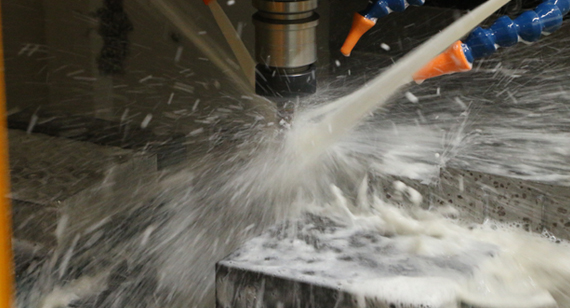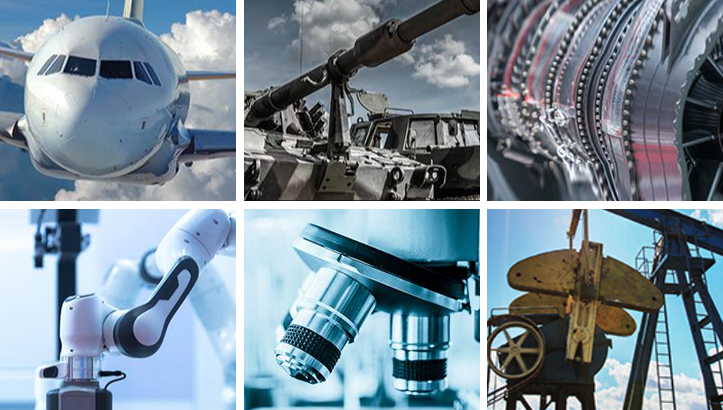15 years one-stop China custom CNC machining parts factory

Hey there I’m VMT Sam!
With 25 years of CNC machining experience we are committed to helping clients overcome 10000 complex part-processing challenges all to contribute to a better life through intelligent manufacturing. Contact us now
 244 |
Published by VMT at Jun 21 2024
244 |
Published by VMT at Jun 21 2024
Introduction
In the field of CNC machining, cutting aluminum is a crucial technique. Aluminum, known for its light weight, high strength, and corrosion resistance, is widely used in industries such as aerospace, automotive, and electronics. This article provides a detailed overview of 12 professional methods and techniques for CNC cutting aluminum, aimed at helping readers better master the manufacturing technology of aluminum CNC machined parts, improving production efficiency and product quality.
Basic Knowledge and Preparation for CNC Cutting Aluminum
Before CNC cutting aluminum, it's essential to understand the characteristics of aluminum and CNC machining equipment. Aluminum has excellent thermal conductivity and ductility but also has a relatively soft texture and high thermal expansion coefficient. Therefore, selecting appropriate tools, cutting parameters, and cooling fluids is crucial when CNC cutting aluminum. Additionally, ensuring equipment maintenance and tool management is necessary for quality and safety during the machining process.

12 Methods for CNC Cutting Aluminum
Choosing the Right Tools: Select tools with high hardness, wear resistance, and good cutting performance, such as carbide or high-speed steel tools, based on the characteristics of aluminum.
Optimizing Cutting Parameters: Set reasonable cutting speeds, feed rates, and cutting depths based on the hardness and thickness of the aluminum to improve machining efficiency and surface quality.
Using High-Pressure Coolant: Employing high-pressure coolant can effectively reduce cutting temperature, minimize tool wear, and prevent workpiece deformation.
Reverse Cutting: Use reverse cutting, which involves turning both sides of the aluminum workpiece, to reduce the formation of long, stringy aluminum chips.
Increasing the Number of Tools: Increase the number of tools to achieve more efficient machining, such as using multiple tools simultaneously to enhance production efficiency.
Controlling Cutting Depth: Control the cutting depth to avoid excessive cutting, which can damage tools or deform the workpiece.
Optimizing Tool Paths: Optimize tool paths based on the shape of the aluminum and machining requirements to reduce idle running and unnecessary cutting, thus improving efficiency.
Selecting Appropriate Cutting Lubricants: Cutting lubricants play a role in cooling, lubricating, and cleaning during CNC cutting. Choosing the right lubricant can enhance machining efficiency and surface quality.
Controlling Cutting Temperature: Monitor cutting temperature closely during CNC cutting. Excessive temperatures can soften and deform aluminum and cause tool wear.
Regular Tool Wear Inspection: Regularly inspect tool wear and replace severely worn tools promptly to ensure machining quality and efficiency.
Using CNC Prototyping Technology: CNC prototyping technology can quickly and accurately produce aluminum prototypes, providing a reliable basis for subsequent mass production.
Providing Customized CNC Machining Services: Offer customized CNC machining services, including cutting, drilling, and milling aluminum, based on specific customer requirements to meet personalized needs.
Applications of CNC Cutting Aluminum
CNC cutting aluminum technology is widely used in various industries. For instance, in the automotive industry, aluminum is used to manufacture engine and body parts. In the electronics industry, aluminum is used for heat sinks and enclosures. In the aerospace industry, aluminum is used for aircraft and rocket components. Additionally, CNC cutting aluminum technology plays a significant role in construction and shipbuilding.

Advantages and Challenges of CNC Cutting Aluminum
CNC cutting aluminum technology offers advantages such as high precision, high efficiency, and high flexibility, meeting the needs of various industries for aluminum processing. However, it also faces challenges such as rapid tool wear, high cutting temperatures, and aluminum chip management. Therefore, practical application requires considering various factors and selecting appropriate methods and parameters to maximize the benefits of CNC cutting aluminum technology.
Conclusion and Outlook
CNC cutting aluminum is a vital CNC machining technology with broad applications across many industries. This article introduces 12 professional methods and techniques for CNC cutting aluminum, aiming to help readers better master the manufacturing technology of aluminum CNC machined parts. In the future, with ongoing technological advancements and market development, CNC cutting aluminum technology will continue to improve and optimize, providing robust support for the growth of the aluminum machining industry.
Ready To Start Your Next Project?
Get Instant Quote

Request a Free Quote
Send us a message if you have any questions or request a quote. We will get back to you ASAP!